Below is a chronicle of the key events in the history of the Coastguard in the Hastings area, charting how it began as an anti-smuggling force and evolved into the rescue service it is today.
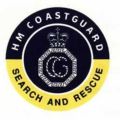 |
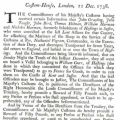 |
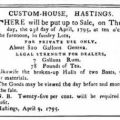 |
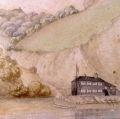 |
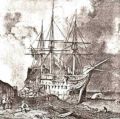 |
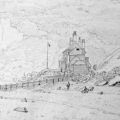 |
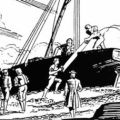 |
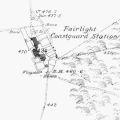 |
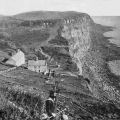 |
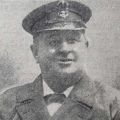 |
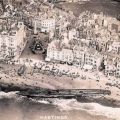 |
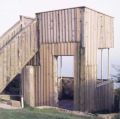 |
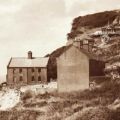 |
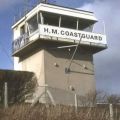 |
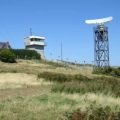 |
1403 - For many centuries there was often the fear of a foreign invasion across the sea waters surrounding Britain, so watches were mounted along the coast, especially in the south. One of the first coast defence laws was passed in 1403, when Henry IV acted to secure England against an attack by ordering that such watches should be kept “as they were wont to be in times past”, probably from at least the early 13th century. A network of fire beacons along the coast, with links inland, was the main method for signalling the presence of enemy ships until the end of the 18th century. Each beacon also mobilised militia forces in its surrounding area, mustering bands of local people to fight off invaders. The system became highly organised during the 16th century, particularly when the Spanish Armada was expected in 1588. Fairlight always played a prominent role in this communications network, being the highest land between Beachy Head in the west and Hythe in the east. There is no record of the site of the beacons, but the highest point able to signal inland as well as along the coast was about 200 yards south-west of Fairlight Church (mostly quarried away during World War Two). The church, built 1180, could also have been used, as its tower was visible all around for many miles. Watches would probably have been kept where Fairlight Coastguard Station is today, and on the East Hill.
1735 October - A convoy of smugglers taking contraband inland from a beach near Hastings was ambushed by Customs officers and soldiers at Hollington. The smugglers were probably the Hawkhurst gang, as one of them was killed, and he was a carpenter from Hawkhurst. Over the following years the gang became increasing violent and lost its support from neighbouring areas. This helped the Customs launch a major campaign against the Hawkhurst gang following their brutal murder of a Customs officer in February 1748. The gang was successfully broken up, and 39 smugglers were executed during 1748-49, with another ten dying in prison.
1750 - The earliest known large-scale map of Hastings, produced by local teacher and surveyor Samuel Cant, shows a building on the beach opposite the bottom of All Saints Street. This was almost certainly the ‘Custom Boat House’ in Cant’s description of the map. On top of the East Hill, today’s barbeque compound is called ‘Beacon Hill’ and has a large signalling flagpole in its south-east corner.
1759 - A foreign invasion of Britain was feared, so the town of Hastings gave the government's Ordnance Board the site for a defence battery, with cannons. ‘The Battery’, as it was known, was built in 1760 where today the promenade lies opposite the west end of West Street. At the same time a building - the Government House - was erected at what is now called Sturdee Place to accommodate the gunners and their equipment. It was built on the site of an earlier and simpler battery that had guarded the west side of the town (a similar eastern battery stood at the bottom of All Saints Street, and was replaced by East Cliff House c1762). Government House became the headquarters of the Coastguard in the Hastings area, and remained so until 1927, through its demolition and rebuilding in 1899/1900. At the Battery, a small Customs house was erected on piles at the east end of it, nearly opposite the Cutter pub. In 1805 a Customs boat house (29 ft by 10.5 ft) was built next to the house. The house was destroyed by the sea and a larger replacement house was built a few yards to the east in 1818. The first Cutter pub was built in 1769; could it have taken its name from the revenue cutter?
1787 September - General William Roy set up a 32-feet high scaffold tower supporting a theodolite on Fairlight Down, where North’s Seat is today, or close to it. He was making long-range observations as part of the first triangulation survey linking London and Paris that resulted in 1791 of the setting up of the Ordnance Survey, the world’s first official surveying body. Fairlight and Dover were the two key English cross-Channel observation points. The 1787 survey enabled the production of the first one-inch-to-the-mile maps, which began in the 1790s.
1793-1815 - During the Napoleonic Wars, Hastings was in the front line because it was so close to France. In fear of a French invasion, troops were stationed in the town in encampments and specially-built military barracks around the town. Edward Milward Snr sold to the government about 30 acres of ground at Halton, where the main barracks were erected in 1803-4; these were sold off to Boykett Breeds in 1823 for development. The barracks built at Bopeep, near the Bopeep pub, in 1794, were accidently burnt down in February 1804, and then rebuilt. There were also barracks at Bexhill, Battle, Winchelsea and probably Pett, plus encampments on Fairlight Down. Milward’s High Street stables (now the Stables Theatre) were converted to barracks in 1797. Troops were also billeted in houses around the town, and there was a marked increase in the number of illegitimate children. A volunteer force, the Sea Fencibles, akin to the Home Guard of World War Two, was formed in Hastings in February 1798.
1794-95 - A ‘Signal Station’ was built where Fairlight Coastguard Station is today. This was one of a line of such stations set up by the government in late 1794 and early 1795 along the south coast, to monitor shipping movements, identify enemy vessels and communicate with defence forces by day and night. Each station consisted of a small wooden hut-cum-cottage, prefabricated in Portsmouth Dockyard, and an 80 feet high mast able to fly flags and display signal balls. All this was delivered by sea to the nearest landing site. Each station had two main rooms, one for the lieutenant in charge to live in, and the other for three seamen. At Fairlight, the officer in charge, Lieutenant Waters, found the building so untenable that he paid £60 of his own money for a more substantial room to be added. The stations were managed by the Admiralty at first, and then from March 1798 by the local captain of the Sea Fencible volunteers, although still staffed by the Navy. When the stations closed, in 1814, there were 26 along the coast between North Foreland and the Needles. Fairlight’s nearest neighbour to the east was at Dungeness point, while to the west there was initially an 18 mile gap to Beachy Head, but this made signalling so difficult that in 1811 intermediate stations were built at Galley Hill and Pevensey Bay. The fate of the Fairlight station immediately after 1814 is uncertain, but in 1818 the Admiralty decided to set up a semaphore system linking Deal and Beachy Head, with a station at Fairlight. The old building was probably demolished and replaced by a bigger Coast Blockade Service watch house and semaphore station (see 1818-19). The new Popham semaphore system, invented by Rear Admiral Sir Home Popham in 1815, improved communications between the Blockade stations and revenue cutters. The semaphore was a tall mast with two arms, operated by chains running down inside the mast, which had a wooden shed around its base. Naval men inside the shed worked its arms. The semaphore network was installed over a period of years, covering the Kent coast and Sussex as far west as Beachy Head. Fairlight’s neighbours were Jury’s Gap to the east, Bexhill to the west. When the system became operational in 1820, it was handed over to the Coast Blockade Service. But most smuggling took place at night, so the network, though efficient, proved of little value, and it fell out of use around 1826.
1803 - The March 1802 Treaty of Amiens brought the war with France to a brief halt, but fighting resumed in May 1803. This highlighted the need for improved defences, prompting the building of the Martello Towers from 1805 (see below) and the setting up of a new beacon warning system along the south coast to help inform and unite the many military forces. The medieval fire beacons had been partly reinstated over the previous decade, but had been found inadequate, so in the early autumn of 1803 a new nationwide chain of signal beacons was set up by the Army. Their main purpose was to alert people inland, leaving the Admiralty’s 1795 signal stations to cover the coastline. Fourteen stations were set up in Sussex, including one on Fairlight Down, with its nearest neighbours (from west to east) Jevington Hill, Brightling, Hawkhurst, Tenterden and Aldington near Hythe. The beacons were tall simple piles of combustibles, especially gorse. Dragoons were stationed in rough huts by the Fairlight Down beacon, ready to ride with despatches to the Army commander based in Hastings (there were then 2,100 infantry in and around Hastings, including on Fairlight Down). A test of the inland network in late 1803 found it was possible to signal warning of an approaching invasion over a distance of 100 miles in 15 minutes. But the many Army contingents in Sussex also needed to be able to communicate with each other, and so at the same time a pioneering inland telegraph system was set up between Winchelsea and Brighton. A tall mast, with flags, balls and pennants, was erected on Fairlight Down, linked to Winchelsea and Bexhill. The 1803/5 fear of invasion soon passed, however, and as the infantry moved away, the telegraph system either went with them or was dismantled. The beacons stayed in place for a few years, until the French looked even less of a threat.
1805 - The construction of 73 south coast Martello Towers started in the spring of 1805, and they were completed in 1806-8 - after Nelson’s October 1805 victory at the Battle of Trafalgar, which made them redundant. Nos 31-38 were between Rye Harbour and Pett Level, at 600 yard intervals, with No 38 at Cliff End. None of these survive: No 31 was destroyed by the sea in the 1930s; 35 and 38 were blown up in explosive tests in April 1872; 36 was lost c1869-72; 37 was blown up in June 1866. West of Hastings, No 39 was located where today is the promenade at the junction of Sea Road and Grosvenor Gardens, St Leonards (it was lost in the late 1870s). Nos 40-42 were on the beach at Bulverhythe (40 was blown up in November 1873 as the sea undermined it; 41 was swept away in a storm in February 1842; 42 was undermined by the sea in 1840). No 43 was on Bulverhythe Cliff, opposite the Bull Inn (dismantled late 1868), 44 on Galley Hill (gone by the end of the 19th century), 45 opposite the Sackville Hotel site in Bexhill (demolished 1822), 46 was near the site of the De La Warr Pavilion (demolished 1870), 47 at the west end of the Polegrove, 48 south of Pages Avenue (demolished 1858), 49 near Veness Gap (largely destroyed by artillery tests in November 1860), 50 near the site of the Cooden Beach Hotel.
1809 - The Preventive Water Guard (PWG) was set up by the Board of Customs as a result of government concerns during the Napoleonic War, especially over the great loss of national revenue caused by smuggling. The change brought together under the centralised control of the Customs the fleet of offshore revenue cutters and the rowing boats - the ‘preventive’ boats - that many Customs houses had been using closing inshore. The aim was to have a better-run triple defensive ring: the heavily armed revenue cruisers in deep waters, the preventive boats in shallow areas and the riding officers patrolling the coastline. In addition to revenue work, the PWG also assisted in life-saving after shipwrecks, a role that continued when it became part of the Coastguard. Martello Towers were used as bases where necessary.
1810 - A small Customs watch house and boat house were built on the seaward side of Mercers Bank, Hastings, the group of netshops and sheds then standing opposite the bottom of All Saints Street and today’s Bourne road. The boat was a large rowing boat, carrying a Customs surveyor to board and search vessels. The plot was 31 ft by 14 ft, on a 21 year lease to the Commissioners of Customs. It was taken over by the Coast Blockade Service after they were set up in 1817. Brett (see Sources) also said there was a Coastguard station at the Priory (probably today’s Carlisle Parade) in 1810, but it is not known when this was built.
1816 February - The management of the PWG was changed and strengthened because the end of the Napoleonic war had brought an upsurge in smuggling. Many agricultural workers in Sussex and Kent had taken up ‘running’ because they were the worst paid, fed and housed of all classes of people. The Board of Customs lost much of its role in running the PWG, which was re-organised on naval lines, being run by a senior naval officer reporting to the Treasury. In addition, its boatmen had to be ex-ratings and the fleet of 44 revenue cutters (then known as cruisers) was transferred from the Customs to the Admiralty. The Treasury from then on managed the PWG, and the cruisers joined the Navy. But the Treasury neglected the PWG, and it declined even further over the following six years. In 1816 the coast was divided nationally into 31 districts, with 150 stations. The preventive men were equipped with boats and firearms, and were responsible for catching anyone who dodged the offshore cruisers. In rough weather they worked on shore. The PWG's primary role was anti-smuggling, but it also continued giving help in life-saving, and took charge of wrecks. Some PWG stations - including Hastings - had the new ‘Captain Manby’s Life Saving Apparatus’, a mortar firing a 30lb shot with 275 yards of line attached, adopted by the Board of Ordnance in 1810. It is unclear exactly how many stations existed in the Hastings area in 1816. The only known ones are Fairlight signal station, Mercers Bank watch house, the 1759 Government House and the Martello Towers from Bopeep westward.
1817 - During 1816 it became clear that armed marines based onshore, carrying out on-foot coastal patrols, were the only way to stop smuggling in the worst areas. An experiment along ten miles of coast between Sandwich Bay and South Foreland in late 1816 was a success, so in February 1817, amidst rising fears of a national revolution aided by smuggling, the government agreed to set up a naval beach cordon between North Foreland and Dungeness. The new ‘Royal Naval Coast Blockade Service for the Prevention of Smuggling’, as it became known, replaced the PWG with 400 naval officers and men - the ‘sentinels’ - plus 14 galleys (white, clinker-built boats with six or eight oars). This new naval service, based at Deal, was quickly established, and it then expanded over the following eight years. This was spurred on by reports of smuggling taking place just beyond the west end of the Blockade. In September 1817, for example, a Times correspondent saw 11 French boats removing goods in broad daylight near Hastings, with no one trying to stop them. By November 1817 the Coast Blockade Service (CBS) had been extended west along the north Kent coast to Shell Ness (the eastern point of the Isle of Sheppey) and west in Sussex to Cuckmere Haven, with over 1,200 officers and men replacing the PWG. They took over all the PWG stations, including the watch house at Mercers Bank and the 1759 Government House. Initially the area was split into three divisions, with Hastings being the headquarters of the Camber to Cuckmere division, run from the Government House (see 1818-19). Eventually, in early 1824, the CBS was extended so that it was covering almost 200 miles of coast between Sheerness and Chichester Harbour. This was split into six divisions, with Hastings commanding the Sussex Eastern Division (see 1825). The CBS was the Navy on shore, acting as a police force before the police had been set up. The sentinels were tough, efficient, and disliked. Nicknamed as the ‘Warriors’ at first, the CBS men strengthened the land force of riding officers, although as historian Roy Philp said, “the co-operation [between the CBS and riding officers] was well and truly absent”. The sentinel patrols were of non-local, armed and militant men, usually carrying a cutlass and pistol. They forced local smugglers to either submit or take up arms as well, which many did. The 1820s saw an escalation in the violence used by smugglers, with many injuries and deaths on both sides. But eventually the Royal Navy did succeed, against much local hatred and an often hostile magistracy, in defeating the large smuggling gangs, and in stopping Sussex and Kent becoming ungovernable.
1818-19 - The CBS divisions were sub-divided into districts, each of which controlled six to eight Blockade stations, also often called watch houses. The Camber-Cuckmere division, run from the Hastings Government House, had three districts, based in Rye, Hastings and Eastbourne. It is not known how many stations there were in the Hastings district, but they were built as quickly as possible during 1819. In January 1819 the Board of Customs leased a platform of ground 80 feet by 40 feet at Ecclesbourne Glen, just above the beach, close to the stream on its east side (the site has now been lost to the sea). Here was built a wooden watch house in the spring and summer of 1819.
Also in 1819 a watch house was erected at the Haddocks, probably on the site of the Coastguard cottages built there in 1832 and part of which still survives. In addition, the 1795 signal station at Fairlight was rebuilt to become a Blockade watch-house and semaphore signal station (see 1794-95). All three watch houses - Ecclesbourne, Haddocks and Fairlight - later became Coastguard stations. The CBS was given permission by Hastings Council in December 1820 to ‘pile and plank’ the beach in front of the watch house at Mercers Bank. A special watch house at Rye Harbour was HMS Enchantress, a 14-gun sloop hauled up on the west bank there in early 1819. The 80-feet long vessel, built in 1804, was broken up in 1869.
1821 March 15 - In a dramatic smuggling event, a Hastings fisherman, Joseph Swaine, was shot dead by CBS sentinel George England. Swaine had just come ashore in his boat and was hauling it up the beach when England tried to search it, as the sentinels did to all Hastings boats. Swaine told him to wait until the boat was stopped and secured, but England ignored him. A fight broke out and Swaine was killed instantly when England’s pistol went off. A furious crowd of fishermen cornered England, intent on murdering him, but he was rescued by a strong force of Blockade men and cavalry. At Horsham Assizes on March 28 he said it was an accident, but he was found guilty of murder and sentenced to be hung. He was pardoned a few days later, however. The Hastings fishermen petitioned the prime minister, Lord Liverpool, complaining about the intensive searches of their boats. Several deputations of fishermen met Captain William McCulloch, the Navy officer who had set up and ran the CBS, but no changes were made. As a result, Hastings fishermen remained hostile to the Blockade for many years and did everything possible to stop or slow searches of their boats.
1822 December - Eight Blockade men landing from a CBS tender were drowned when their boat overturned in heavy surf off Hastings beach.
1822 January 15 - The government rationalised the complicated preventive service, giving it the new name ‘Coast Guard’. (The two words were not officially linked to become ‘Coastguard’ for many years, although this soon happened in practice.) The birth of the Coastguard on this day followed the report of a Whitehall committee which had found that the Treasury had been bad managers of the PWG since taking it over in 1816, and that smugglers had pursued their trade “to a most flagrant degree of audacity and violence with conspicuous success”. The new Coastguard brought together the PWG, the revenue cruisers and the riding officers under one central authority, the Board of Customs. This was effectively turning the clock back to pre-1816 days. But the Coastguard was only established on the coast where there was no CBS, and as a result much of Kent and Sussex (including Hastings) remained under the CBS and Admiralty until 1831. A survey in mid-1821 found there were 1,276 CBS men between Sheerness and Cuckmere, but only 1,250 PWG for the rest of Britain. The CBS remained unchanged, but in late 1822 the Custom’s riding officers - renamed as the Land Guard - were removed from the Blockade line, leaving the Navy in command of all preventive operations. Initially, almost everywhere around the coast the local population was hostile to the new Coastguard and would not provide accommodation, so it had to be housed in Martello Towers or in old hulks on the beach. Then special houses began to be built: the chief officer's house was set apart from the rest, with one room as a watch room containing firearms.
1825 - The Coast Blockade line was extended in 1824 to its final coverage: almost 200 miles of coast from Sheerness to Chichester Harbour, with over 2,300 men. According to author Roy Philp, official records show that in 1825 there were 27 CBS stations in the Sussex Eastern Division, from Camber to Langney Point inclusive. Between Pett Level and Galley Hill these were: Martello Tower 38, Haddocks, Fairlight (also a signal station), Ecclesbourne, Hastings watch house, Priory watch house, Martellos 40 and 41 (west of Bopeep) and Martello 44 at Galley Hill (also a signal station). The division’s headquarters was the Priory watch house, on the beach where Carlisle Parade is today. The Priory had the largest number of personnel, with four officers, five petty officers and 22 men. Hastings watch house had four petty officers and 10 men (this is presumably referring to the 1759 Government House in Marine Parade). By 1830 Martello Towers 39 (Bopeep) and 42 (Bulverhythe) had also been occupied as stations.
1828 January 3 - On a moonlit night, a party of smugglers landed a cargo of spirits near, or east of, Glyne Gap and set off inland. Coast Blockade men from the Galley Hill Martello Tower and reinforcements, totalling 21, pursued them through Bexhill and after a running fight caught up with them at Sidley. There a pitched battle took place, with two smugglers and one Blockademan killed. But the contrabanders all escaped, taking their goods and wounded comrades with them. Eight of the smugglers were later caught, tried and deported.
1830 February 20 - The CBS often saved lives in the rising number of shipwrecks along the Channel coast, during the rapid increase in seaborne trade. On this day, a large French lugger was wrecked at Fairlight. The ship’s boy drowned but the other ten crew were saved by men of the local Blockade stations, for which the Shipwreck Institution gave their two lieutenants gold medals, and 16 guineas for the others.
1831 January 5 - Two smugglers - William Cruttenden of Hastings and George Harrod of Guestling - were shot dead on the beach at Fairlight Glen by military officers under attack from a large group of smugglers. A third smuggler was injured but survived. A jury later decided it was justifiable homicide. Smugglers are believed to have played a leading role in the Captain Swing uprising that winter, 1830/1, when rural workers in south-east England tried to stop their working and living conditions becoming worse. The Fairlight clash was the last attack on the Sussex Blockade.
1831 Spring - The Admiralty’s Coast Blockade Service was abolished and its role was taken over by the Customs-run Coastguard. The main reason was the high cost of running the CBS, which was much more expensive than the Coastguard. The years 1817-1831 of the Blockade had been the 14 bloodiest years in the history of smuggling. It was a war of attrition, which gradually turned the pattern of smuggling away from landings on shore to concealments aboard larger port-using vessels. The Coastguard began taking control of the Blockade premises in March 1831, completing the operation by late June. The Hastings & Cinque Ports Iris newspaper of Saturday March 26 said: “During this week the officers and men of the Coastguard … have been active in taking possession of the stations from the Coast Blockade; the whole of the latter force from Camber Station as far as Fairlight have been removed to the [the former warship] Enchantress in Rye Harbour, where they wait a passage to Newhaven to be paid off.” The stations west of Fairlight followed soon after. Although the 6,700-strong Coastguard after 1831 was managed by the Board of Customs, it was also a reserve force for the Royal Navy, with all appointments of officers and boatmen controlled by the Admiralty. Many senior officers of the CBS were transferred to the Coastguard. The Admiralty re-fashioned the Coastguard, with naval style uniform and drill, and training on large guns for coast defence.
1832 - From 1832 major investments were made in new facilities for the Coastguards. More living accommodation was needed, plus storage space for naval arms and equipment. The Ecclesbourne Station leased more ground for an extension, making its area 50 ft by 323 ft, with much of the extra land to be a garden. A parade with bastion protected the building from the sea. Many new cottages were built as homes all along the coast, including near Martello Towers 39 (opposite the Bopeep pub) and 41. Those close to No 41, later called the Coastguard Cottages, were a small single-storey terrace of six, in a north-west/south-east row. Today, they would be a few yards south of Bexhill Road, just inside the west boundary of Motorhaven garage. The cottages were the St Leonards Coastguard Station from c1886 until 1904. They were demolished c1959. On the 1873 Ordnance Survey plan the terrace is the only significant building between the Bull Inn and the West Marina railway bridge, and Bexhill Road is only a track. Five cottages were also built at the Haddocks, probably being the building that still partly survives (the previous Haddocks station was reported in 1826 to be falling apart because of poor foundations). Another new building was put up at Cliff End.
1833 January - The last member of the Coastguard to be murdered fighting smugglers on the Kent/Sussex coast was killed one night in late January near the Wish Tower in Eastbourne. A large group of armed smugglers were unloading a boat when Coastguards arrived, and in the ensuing bloody fight George Pett, chief boatman at Eastbourne, was shot dead. Three other Coastguards were injured, as were many smugglers. It is believed that the last smuggler to be killed in Sussex or Kent was a fiddler from Winchelsea, Thomas Monk, who was shot in an affray at Camber Castle on April 1 1838. The incidence of smuggling dropped dramatically in the 1840s, thanks to changes in the duty tariffs brought in by free trade promoter Sir Robert Peel when he became prime minister in 1841.
1833 November 25 - The last major running encounter between smugglers and Coastguards in Sussex took place at Pevensey Sluice. Many armed ‘free-traders’ unloaded a boat of tea and spirits, and fought a battle with Coastguards as they tried to take it inland. The fight rolled on for two hours across seven miles of the Pevensey Levels Three smugglers were killed and five taken prisoner, but no Coastguards were injured. The five were transported for life and many of the goods were recovered.
1834 November 20 - Six Coastguards from No 41 Tower drowned off St Leonards when their rowing galley overturned. They had put to sea to help the small collier Good Intent, of Rye, but it sank as they approached, and then their boat capsized. This was witnessed by Princess Victoria, then staying at Crown House. The tragedy resulted in a public fund being set up, which paid for the first-ever Hastings lifeboat, the locally-built Ariel. Unfortunately, the Ariel had an unsuccessful career, stretching over about 17 years. No lives were saved, and the boat may only have been in the water two or three times. There was also no boat shelter or regular maintenance, and the Ariel was left in the open in a variety of places until she rotted away.
1836 February - Landowner Countess Waldegrave gave permission for a groyne to be built in front of the Ecclesbourne watch house, as the sea was then encroaching.
1836 April 14 - The first stone of the new Priory Coastguard Station was laid in Prospect Place, on top of White Rock. Nine silver coins were put under the stone, but they were stolen the following night. The new station replaced the one that been on the squatted America Ground, in the middle of today’s Carlisle Parade. The Crown had taken ownership of the eight acres of the Ground in 1828, clearing it in 1836 for development. The Priory Station, now residences, still stands on the corner of Prospect Place, looking much as it did when built. It is the oldest Coastguard building in the borough of Hastings.
1839 - A Treasury report on the Coastguard said there were then 2,857 officers, men and mounted guard in England, which was split into 37 Districts, each under an inspecting officer, divided into stations, under chief officers. There were 35 cruisers in England. The Treasury believed smuggling was then “in a declining state” and “at a low ebb”. A map of a few years later shows the Hastings station comprised, from west to east: Langley, Pevensey, Kewhurst (Cooden), Bexhill, Galley Hill, Martello Tower 39 (Bopeep), Priory, Hastings, Ecclesbourne, Fairlight, Haddocks, Tower 36, Tower 31, Winchelsea, HMS Enchantress (Rye Harbour) and Camber. The headquarters was probably the Government House in Marine Parade.
1839 - Seized smugglers’ boats were often cut into three sections at a compound known as a ‘condemned hole’. At Hastings there had been one under Castle Cliff from at least 1820. In 1839 it was moved to a 50 ft by 30 ft plot in Rock-a-Nore Road, partly where the Fishermens Church (now the Fishermen’s Museum) was built in the early 1850s. The old site, opposite the west end of Pelham Crescent, was taken over by shipbuilder George Thwaites, as part of his shipyard. Condemned holes fell out of use when smuggling rapidly declined in the 1840s.
1840s - In the early 1840s the government’s introduction of a free trade policy slashed import duties and therefore ended most forms of traditional smuggling. Dramatic scenes of fighting and ‘running’ all along the coast became a thing of the past. The only commodity worth smuggling in any quantity was tobacco, and this was mainly brought into ports, well hidden on large cargo ships. From the 1840s the Coastguard gave increased priority to helping the steadily increasing number of vessels and people in distress, and to protecting shipwrecks from plundering. The Board of Customs decided this new role of the Coastguard needed less spending, so cuts were made. The number of cruisers was steadily reduced from 1844, and the riding officers were almost completely abolished in 1849, although one or two were left in some districts, including Hastings.
1850 January - An eagle was shot under the ‘East Cliff’ near Pett. It weighed 8½ pounds, was three feet long and had a wingspan of 6½ feet.
1852 December - An official list of this date showed that premises occupied by the Coastguard included: Martello Towers 37 and 38 at Pett Level, Haddocks watch house, Fairlight Station, Ecclesbourne watch house, “offices, watch house and detached station” at Hastings, Priory Station, Tower 39 (opposite the Bopeep pub), Towers 40-44 and Galley Hill.
1854 - The 1854 Merchant Shipping Act made the Board of Trade responsible for supplying life-saving apparatus to the Coastguard and later to the volunteer life-saving brigades. Before 1854 the Coastguard had always played a part in life-saving, but until this point none of the legislation affecting its early development gave it any statutory responsibility for providing assistance. This act was the government’s first formal step in that direction.
1854-56 - The effectiveness of the Coastguard as a naval reserve was put to test during the Crimean War, when all available Coastguards were drafted in to the Navy. The war revealed the need for better-trained reserves, and the Coastguard was therefore placed under the full control of the Admiralty on October 1 1856. The 1856 Coast Guard Service Act sealed the role of the Coastguard as a naval reserve and coast defence force. The act stated that the duties of the Coastguard were: (1) Defence of the coasts of the realm; (2) More ready manning of Her Majesty's Navy in case of war or emergency; (3) The protection of the Revenue from smuggling. This remained the official remit until the First World War. Although the 1856 act made no mention of life saving, duties laid down included assistance to vessels in danger, taking charge of wrecks, the operation of life saving apparatus, and an active participation in the lifeboats which were being stationed around the coasts. Throughout the 19th century life-saving was carried out by volunteers, with the Coastguard giving help at a level which steadily increased from 1856. The Admiralty also gave every man a musket, bayonet, two pistols and a sword from 1857. The coast was divided into six districts, with Hastings in the Southern District, from Dover to Yealm in Dorset. The Coastguard Squadron of mostly out-of-date sailing vessels was set up after 1856, with each ship responsible for a specific length of coast. The area from Ramsgate to Southampton was patrolled by the unusually newer 31-gun screw frigate Dauntless, of 1,575 tons, built in 1848.
1858 April 5 - The first Hastings RNLI lifeboat, the Victoria, came into service. This followed the drowning of four men in front of hundreds of people when the 67-ton sloop Draper was driven onto the reefs at Rock-a-Nore by a severe gale in October 1857. The first lifeboat station was at Rock-a-Nore, near today’s Coastguard station. Although the Victoria was owned by the RNLI, founded in 1854, there were soon crewing problems, and for many years the Victoria depended on voluntary aid from the local Coastguards.
1859 January - Coastguards at Hastings acquired Board of Trade rocket apparatus. It was stored in the lifeboat house at Rock-a-Nore, but under Coastguard control. In June 1859 the Coastguard in the Hastings District (Langley-Camber) was inspected, with 110 men lining up on Marine Parade. In October 1859 the Ecclesbourne station, close to the beach, was made uninhabitable by storms.
1862 - The Hastings Chronicle of April 30 recorded that the crews of the 10 Hastings District Coastguard stations assembled on the East Hill for rifle and sword practice, with about 70 men taking part.
1864 - Diplock's Handbook says: "The old Coastguard Station, which formerly stood on the beach east of the [Ecclesbourne] stream, was so seriously damaged by the storms of 1859 as to become uninhabitable, as it had long been insecure. The new houses, erected on the western side, a little way higher up the cliff, are far more substantial and comfortable than the old wooden houses, though less picturesque." It was brick built, with rendering, in two blocks, with a yard in front collecting rainwater into an underground brick tank. The Coastguard occupied land stretching uphill to the rock-face marking the west edge of the glen, which they used as gardens. The station closed in 1908/9 and was demolished in 1963.
1866 Autumn - The Board of Customs left Hastings, as it was no longer a significant trading port. The Customs house in East Parade opposite the Rising Sun pub (now the Simply Italian restaurant) was let to a tradesman. Hastings Council refused to let Customs give up the remaining ten years on its lease. In 1881 the council decided to demolish the building and make its site available for the proposed new lifeboat house. But on August 12 1881, before demolition took place, the building was washed into the sea by a severe gale. The Hastings Chronicle of August 17 said it had been built in about 1851. It was close to the site of the succession of other Customs houses erected since 1759.
1868 October 7 - The dismantling of Martello Tower 43 on Bulverhythe Cliff, opposite the Bull Inn, began.
1869 May - The closure of Priory Coastguard Station in Prospect Place began, for economy reasons, but at the last minute this was put on hold and it re-opened. In June 1882 its closure was announced again, but it is unclear what happened (see 1896).
1875 November 14 - The famous ‘Great Storm’ caused destruction around the Martello Tower 39 Coastguard station, then still in use, where the south west corner of Grosvenor Gardens is today. It may have still been there in 1878.
1881 December 18 - Hurricane-force winds drove a sailing vessel onto the rocks near the Haddocks Coastguard Station at 5.30am that Sunday morning. The German barque Sacitta was wrecked and seven men were killed. She was outward bound from Hamburg to Mexico with a general cargo, including pianos, utensils, rifles, toys, twine and a large amount of alcohol in the form of casks and bottles of spirits and bottles of beer. The vessel struck a reef near the Haddocks and immediately broke in two. One crewman survived, being washed ashore, but the other five drowned. By Monday the whole coast from Fairlight nearly to Rye was thickly strewn with an enormous quantity of cargo and wreckage, viewed by many people. The Hastings News said: "The intermixture was scanned over very eagerly by parties whose conduct obtained for them the name of 'Wreckers', but after they had collected a load of booty a coastguardman would in most instances succeed in getting the goods 'handed over'." Some were very saucy and were arrested. The local receiver of wrecks, Mr JC Vidler, had the most valuable goods taken to the Custom House in Rye, with other items stored in the local Coastguard stations, which were soon overflowing. "Large numbers of persons from Hastings, chiefly belonging to the fishing fraternity, visited the scene of the disaster and picked up wrecked goods. It was evident to lookers-on that many of them had partaken too freely of the contraband liquor, and their conduct in this direction has unhappily resulted fatally. On Monday night, several youthful east-enders [Old Towners] returned home intoxicated, and as night wore on two young fellows named Benton and Adams were found to be missing." Harry Benton, aged 16, was found dead the next morning on a hillside near Lovers Seat; Adams was never discovered, presumed washed out to sea. Some young men were said to have drunk quantities of perfume, which maddened them. Large quantities of the liquor were brought back to Hastings, causing much misery and suffering. It was also rumoured that a few rifles were smuggled back to the town.
1882 July 3 - The new Hastings lifeboat station on East Parade was declared open. It remained in use until 1959, when it was demolished as part of the road improvement scheme through the Old Town.
1886 January - The annual report of Hastings RNLI said the Coastguard crew of the lifeboat had by then been replaced by beachmen. A Manby mortar had also been supplied to call the crew together at night.
1886 - At about this time, the St Leonards Coastguard Station on the beach opposite the Bopeep pub was closed to make way for the new large terrace of Grosvenor Gardens. A shed for the rocket apparatus was put up in Cinque Ports Way. The Coastguard Cottages along Bexhill Road became the St Leonards Station, and remained so until 1904-5, when a new Station was built on the corner of Cinque Ports Way and Bexhill Road.
1891 November 11 - During a dramatic storm, the large three-masted German barque JC Pfluger, bound from San Francisco to Bremen in Germany, was driven ashore at Bopeep. Her 24 crew were rescued by Coastguards using breeches buoy equipment. The schooner Nerissa, bound to Norway, was wrecked on Hastings beach. The 1,000 ton JC Pfluger was later refloated and towed to Tilbury Docks, on the Thames.
1893 September - Hastings Council bought from the Crown the foreshore in front of the town, from Ecclesbourne stream to the west end of Grosvenor Gardens, including the 18 acres from Rock-a-Nore to Ecclesbourne that formed part of the Country Park when set up in 1971.
1894 - A telegraph line connecting the Hastings, Ecclesbourne, Fairlight and Haddocks stations was built.
1896 June 16 - The Priory Coastguard Station in Prospect Place was offered for sale by auction, but failed to find a buyer. An advertisement for the auction said the building comprised “officer’s quarters, having two sitting rooms, three bedrooms, kitchen, scullery etc; and men’s quarters, having 40 bed and sitting rooms, with yard, two store-rooms and loft.” It had been leased to the Admiralty, paying £220 pa, with the lease due to expire that Michaelmas, September 29.
1899 - The demolition of the Marine Parade Coastguard Station (the 1759 Government House) started on March 14. A year later, the Weekly Mail of March 23 1900 reported that the new station was nearly complete. Work had been delayed by the need to sink deep foundations. The building was 280 feet long, with flats for 13 men and one officer. At the east end was the boathouse, with the watchroom above it. Arms and ammunition (including cutlasses) were stored behind. In the top centre was the watch-house. The flats had fireproof floors and ceilings.
1904-5 - The Admiralty proposed reducing the Coastguard because advancing technology in ships, arms and communications had made it out-of-date as a form of naval reserve. But this was opposed by the Board of Customs and the Board of Trade, who championed the need for life saving and revenue protection. The result was an economy drive, closing 35 Coastguard stations, and cutting numbers from 4,400 in 1865 to just over 4,000 in 1906, and then to 3,085 by 1911. But in addition, in order to improve the remaining service, new or replacement stations were built The Fairlight Station was rebuilt in 1903/4, with that building today being the Coastguard cottages. The Haddocks Station probably closed at this time, or a few years later, although the east end of the building is still perched on the cliff edge. A new St Leonards Station was constructed at the same time, on the corner of Bexhill Road and Cinque Ports Way, opposite the railway bridge. It still survives today, as housing; what today looks like a garage on the corner of the building was the store containing the Board of Trade rocket apparatus. The new St Leonards Station replaced the Coastguard Cottages further along Bexhill Road which probably came out of Coastguard use soon after this.
1908 - The Ecclesbourne Station closed, with the Pictorial Advertiser of April 29 1909 describing it as "the deserted row of cottages”. In 1911, the Weekly Mail of January 14 mentioned that there was a caretaker looking after the “empty Coastguard houses”.
First World War - Most of the Coastguard were mobilised into the Royal Navy and they suffered very heavy losses. Their mobilisation left much of the coastline unguarded.
1919 April 15 - Two Coastguards died of gas poisoning caused by an ex-German submarine which was washed up on Hastings beach. The U 118 was one of two submarines on tow to a French port when a heavy storm caused the ropes to break when off Beachy Head. One vessel was driven ashore near Cuckmere while the other drifted eastwards to Hastings, coming onto the beach in front of Harold Place at 12.45am on April 15. The nearby Coastguard station in Marine Parade took control of the U 118, which was to remain there for six months. It had a 150mm gun on deck, four forward torpedo tubes and two mine chutes at the stern for mine-laying. The huge vessel immediately became a big attraction, and for a fortnight the Admiralty allowed Hastings Council to let people go on deck for sixpence, thereby collecting almost £300 for the Mayor’s Welcome Home Fund. Two Coastguard officers - chief boatman William Heard and chief officer W Moore - were given responsibility for taking special visitors below deck. They only did that a handful of times, but by the end of April both had become ill with severe internal pains. The cause was unclear at first, but then it was suspected that it was the stench from rotting potatoes, meat and onions lying in water in the after-chamber of the submarine. The illnesses became worse, and attempts to save the men were unsuccessful. Mr Moore died in December 1919 and Mr Heard in February 1920. Surgeons at Mr Heard’s inquest on 16 February said that at first they thought he had pneumonia but then decided he was suffering from the inhalation of a very pungent and noxious gas, possibly chlorine. His death was caused by two large abscesses, on the brain and right lung, resulting from the gas. Mr Heard, aged 47, lived at the Marine Parade Coastguard station with his wife Elizabeth, and had been in the service for 20 years. The U 118 was sold for scrap, and from October to December 1919 was cut up and mostly removed, although it is believed that the keel is still lying under the beach. The gun was left in the beach and dug up in February 1921 to be put on display. Built in Hamburg, the U 118 was launched in February 1918 and sank two British ships: the 5,600 ton collier Wellington, and the 4,839 ton tanker Arca, with a total of 57 casualties. The U 118 was of the nine submarines in the UE 2 class of ocean minelayers, with a range on surface of 13,900 miles at eight knots. It was 267 feet long and 24 feet wide, had a crew of 40, and carried 42 mines and 14 torpedoes.
1921 Jan 9 - A second ex-German submarine was washed up on the town’s beach, this time at Bulverhythe. The UB 131 broke adrift from a tug off Beachy Head in a gale and fog. It was built in Bremen and launched in June 1918, but had no successes in combat, and was broken up after running ashore at Bulverhythe. The UB 131 was one of 95 submarines in the UB III class: coastal torpedo attack vessels, 181 feet long, with 34 crew, an 88mm deck gun and five torpedo tubes, each with two torpedoes.
1922 - A government committee was set up to examine the role of the Coastguard. The Admiralty was keen to get rid of it, as it had effectively become primarily a life-saving force with little Naval role. But the committee found that the Coastguards were playing a wide variety of valuable roles, being the eyes and ears of many separate organisations with coastal interests.
1923 April 1 - The government adopted the committee’s report, validating it in the 1925 Coastguard Act, which repealed the 1856 Act. The Coastguard were transferred to the control of the Board of Trade, which then began the task of establishing a full time professional service able to provide a comprehensive and co-ordinated search and rescue organisation around the coast of the UK. With royal sanction, the name ‘HM Coastguard’ came into being for this new function. There was to be a force of 935 manning 322 stations in the UK. This was Britain's first specialised staff devoted to coast-watching and life-saving. The Board of Trade reorganised the service into the shape that was familiar for many years. The coast was divided into 12 divisions, with a total of 51 districts. In these, ‘regular’ (staff) Coastguards ran stations in more dangerous areas, while stations in the gaps were looked after by the newly-named ‘auxiliaries’ (volunteers), giving them a prominent role. The number of stations was reduced, with those remaining in use being upgraded. The Hastings and St Leonards stations were to close.
1926 August - Pett Coastguard Station was sold by auction at Castle Hotel, Hastings. There were 18 lots, 15 of them cottages, 14 of which were sold.
1927 - The Hastings Coastguard Station in Marine Parade closed, and Fairlight Station became the Hastings area headquarters. St Leonards Station, on the corner of Bexhill Road and Cinque Ports Way, also closed at this time, although the Rocket Apparatus Station remained there for many years. The west end of Marine Parade, between Pelham Place and George Street, containing the former Coastguard building, was renamed Sturdee Place in mid-1927 by Hastings Council, after Admiral Sir Doveton Sturdee (1859-1925), commander of the fleet which won the Battle of the Falkland Islands in December 1914. From 1927 Fairlight was the only Coastguard station in the Hastings area.
1927 - Sixty nine acres of the attractive Firehills, east of Fairlight Station, were bought by Hastings Council in early 1927 to stop the housing development then taking place in Fairlight Cove from spreading. A lease was granted to the Coastguard to build on the Firehills a small ugly lookout, parts of which still remain. The Hastings Observer of November 26 1927 said "The beauty of the Firehills has not been increased by this lookout".
1930 - Rye Harbour Coastguard Station had closed, and the number of staff at Fairlight had been increased. Rye was one of several closing, reported the Hastings Observer of February 15.
1931 - There was an inquiry into the national Coastguard service after six people drowned in a yachting disaster off Cornwall. The service was exonerated, but with some reorganisation recommended, including the reduction of active stations from 252 to 217 and regular personnel from 820 to 772, while auxiliary stations would be increased from 98 to 142. The auxiliaries were re-organised, becoming the Coast Life-Saving Corps, with 6,000 men divided into local companies. They worked the life-saving apparatus, manned the auxiliary watch stations and acted as reliefs to regular officers in the Coastguard stations. Coastguard strengths in 1931 were: Eastbourne four regulars, Bexhill/St Leonards none, Fairlight three, Pett/Rye Harbour none, Jurys Gap two. From about 1931 the Hastings company of auxiliaries had as their base a tiny shed near where the East Hastings Sea Angling Association clubhouse is today, opposite the lifeboat house. This barely had room for one person inside, but contained a phone by which foot patrollers could report to Fairlight. Any life-saving apparatus was probably stored in the lifeboat house, then opposite the Cutter pub. During the Second World War the military built a lookout room on top of their Drill Hall in Rock-a-Nore Road, and this was used by auxiliaries for watches after the war until about 1962, while still keeping their shed as a base. Around 1964 a larger wooden shed, looking like a garage, was built amongst the fishermen’s sheds near the lifeboat house. This was used for storing the small amount of life-saving apparatus auxiliaries then had, and was the base of the Hastings company until the existing Hastings Station was built in 1990.
1932 - The cliff edge was about 15 feet from the Ecclesbourne cottages, said the Hastings Observer of February 27. The Observer of July 22 1933 reported that Fairlight was the only constant-watch Coastguard station between Newhaven and Dungeness.
1939 - In the run-up to the Second World War, volunteers were invited to enrol as auxiliary Coastguards under the National Service scheme. Many members of the Coast Life-Saving Corps signed up. Also in 1939 control of the Coastguard passed to the Ministry of Shipping, and then partly to the Admiralty in May 1940, when auxiliary and regular Coastguards were issued with arms and khaki battledress. After the war, the Admiralty proposed it should run the Coastguard on the same kind of para-military lines as the US Coastguard Service, but this was opposed and instead in 1948 it became a civilian service again, under the Ministry of Transport.
1948 - Coastguards rescued two men from their 3-ton fishing boat RX 237, breaking up on rocks near Fairlight Cove. The two lived at Dover. One was rescued by rocket line. The lifeboat was not available as it was under repair.
1949 April 1 - The Hastings fishing boat Pioneer was tragically lost with her three crew on the Hooks Ledge at Fairlight in thick fog.
1949-52 - An official working party looked into the Coastguard. It recommended keeping the basic structure, with some changes. Because of the increasing developments in shipping efficiency and navigational aids, the number of Coastguards was gradually reduced, with regular stations down from 183 to 161, auxiliary stations from 366 to 312, and regular staff from 667 to 488.
1951 June - Hastings Council gave planning permission “in the national interest” for the RAF to erect 90-feet high lattice masts, six feet square, on two sites: the Fairlight Road radar station (where the picnic site is today), set up in 1940, and north of North’s Seat. In 1952 the Fairlight Road station was chosen to take part in the new anti-Soviet Rotor radar project, and it created a technical centre on land adjoining the Fairlight Coastguard Station. A large underground bunker was built there, with a guardhouse on top. It came on line on August 30 1952, but was redundant by 1956, although it remained on care and maintenance until the early 1960s. It was sealed in 1973 and all buildings on site were demolished. But the underground bunker, with many rooms, still exists fairly intact. In 2002 a team from Subterranea Britannica accessed and recorded the bunker, following which it was resealed (their record and other data is on a website; see Sources). Today the bunker is beneath what looks like a round hillock immediately south-east of the Coastguard station. The only visible relic is an iron vent shaft standing in the middle of a gorse bush on the edge of the hillock. The Fairlight Road radar station was demolished in 1966, becoming first a helipad and now the picnic site opposite the top of Barley Lane.
1959 - The Hastings Observer of August 8 reported that: “The Fairlight Coastguard Station is now able to warn fishing vessels and other shipping in the area of gales at night by a newly-installed triple light system. Four white lights are attached to a square frame in a diamond-shaped formation. If a northerly gale is imminent three of the lights are switched on in a triangular shape with the apex pointing upward. This is reversed if a southerly gale is imminent. The new system was tested last week. … Black cones are hoisted during the daytime if gales are imminent in the area.”
1959 September 10 - In the town’s biggest fire since 1925, about 80 acres of Warren Glen were destroyed in a two-day fire. The fire, which destroyed most of the vegetation on the east side of the glen, was started when a maroon fired by the Coastguard to call out their rescue team landed in the gorse. It was a false alarm, but there was a pall of smoke over Hastings.
1960 - Heavy rain in December 1960 and January 1961 caused big landslips at Lovers’ Seat and Ecclesbourne Glen. A cliff fall carried away the terrace on which Lovers Seat stood, although the ‘Leap Stone’ itself survived until slipping over the edge soon after. In early February the five or six ton stone was hauled back up the cliff and relocated about 100 metres in-land, next to the path going down into Fairlight Glen, where it is today. In Ecclesbourne Glen the fall of large portions of the cliff on the west side undermined the teahouse and the former Coastguard station in early January. The path going down into the glen was permanently close and relocated about 50 yards inland.
1962 Sept - Hastings Council accepted a £350 tender to demolish the Ecclesbourne Coastguard Station, built in 1861, and push it over the cliff. A demolition order had been served on the owner in the autumn of 1961 following several cliff falls in recent years which meant that the southern building was only a few feet from the edge of the cliff. But the owner was a widow with a limited income who could not afford to pay for the demolition, so she conveyed ownership of the station and its surrounding land to the Council in settlement of her liability. There was still no piped water at the station (it came from the well in the yard). S&W Demolition of Folkestone soon began bull-dozing the two buildings with their seven homes onto the beach, but stopped in January 1963 when about three-quarters had been completed. The company then pulled out of the scheme, and in the early summer the Council’s Works Department completed it. The final cost was about £440, for which Hastings Council obtained ownership of a large section of the west side of Ecclesbourne Glen. The abandoned nearby teahouse, perched on the edge of the cliff, was helped onto the beach below in late 1962 by some local youngsters.
1964 September - The new Hastings lifeboat was named Fairlight in honour of the Fairlight Coastguard Station.
1966 - The Coastguard nationally was transferred back to the Board of Trade in 1965 after being under the Ministry of Transport since the end of World War Two. A working group was set up in 1966 to study improvements. Among these, the Coastguard was made responsible for handling requests for lifeboat and helicopter rescues, so that all the services could be co-ordinated. In addition, the Coast Life-Saving Corps officially became the Coastguard Auxiliary Service, with three sections: Rescue, Look-Out and Reporting.
1970 February 23 - A woman started work as a professional Coastguard, the first in the 148-year history of the service, although there had been some female auxiliaries.
1971 April 1 - The Hastings Country Park officially came into existence. It was only the second seaside park to have been set up under the 1968 Countryside Act. It initially comprised 512 of the 830 acres the Council owned or leased between the Old Town, North’s Seat and Fairlight Cove, the other acres being Fairlight Place Farm, which was still in use as farmland. Three quarters of the park was officially of Special Scientific Interest.
1971 June 25 - The Duke of Edinburgh visited Fairlight Station, then in the course of modernisation. It had nine volunteer watchmen and 15 in the rescue section. The Hastings Observer of December 11 1971 reported that the new Fairlight lookout tower had “become operational recently”, the first stage of the modernisation process. Fairlight was then the headquarters of Coastguards in the Hastings area. The only other Coastguard building in the borough of Hastings was a small shed on the beach close to Hastings lifeboat house and the rocket station in Cinque Ports Way.
1975 - Fairlight now had a full complement of eight men, guarding 30 miles of coast between Birling Gap and Dungeness.
1975 October 25 - The Hastings Observer published a description of the “hidden underground bunker at Fairlight, built in the late 1950s, which is equipped to monitor the horrific effects of a nuclear explosion”. The Royal Observer Corps bunker, measuring just 14 feet by eight feet, was six feet underground, and was located to seaward of the Fairlight Coastguard lookout tower. If a nuclear warhead were dropped in the area, three members of a ten-strong group of volunteers would secure themselves inside the bunker and monitor the effects of the blast. The bunker still exists, a few feet in front of the radar scanner, marked by two small concrete blocks, one being on top of the entrance shaft.
1982 August 1 - Fairlight was downgraded, to become a secondary station, with only two Coastguards, and the lookout only to be manned during bad weather and searches.
1989 March 27 - St Clements Caves, the large cave system under the West Hill, opened to the public as the Smugglers Adventure, giving “a voyage back through time to the heyday of smuggling”.
1990 October 26 - The new Hastings Coastguard sector office at Rock-a-Nore was officially opened by the mayor of Hastings, Cllr Paul Smith. It had cost £140,000. This was the first Coastguard headquarters in Hastings Old Town since the closure of the Sturdee Place building in 1927. Fairlight Station had been the HQ from then until this change-over. The Hastings and Fairlight Coastguard companies merged, to be based here. Rock-a-Nore made redundant the Hastings company’s small wooden shed on the beach amongst the fishermen’s buildings, close to the lifeboat house.
1994 - HM Coastguard came under the management of the Coastguard Agency, a new ‘executive agency’ of the Department of Transport. Other changes meant that by the mid-1990s the Coastguard had been reorganised into six SAR (search and rescue) Regions, each with a Maritime Rescue Co-ordination Centre. These were divided into 21 Districts, each with a Maritime Rescue Sub-Centre. Within the Districts the Auxiliary stations were grouped in Sectors, one being based at Hastings.
1998 - The Coastguard Agency and the Marine Safety Agency merged to become the Maritime and Coastguard Agency (MCA), based in Southampton. The MCA today says it “exists to promote high standards of safety at sea, to minimise loss of life amongst seafarers and coastal users, to protect the environment by minimising pollution from ships and to respond to maritime emergencies 24 hours a day. This means the MCA must maintain an adequate civil maritime search and rescue co-ordination service through HM Coastguard.”
Sources
Bibliography
Andrews, John H - The Customs Ports of Sussex 1680-1730, Sussex Notes and Queries, 1954.
Baines, John Manwaring Baines - Historic Hastings, Cinque Ports Press, 1986.
Brent, Colin - Smuggling Through Sussex, East Sussex County Council, 1977.
Brett, Thomas Brandon - Manuscript History of Hastings, 1903, unpublished, in Hastings Library.
Clark, Kenneth M - Smuggling in Rye and District, Rye Museum, 1988.
Cooper, William Durrant - Smuggling in Sussex, Sussex Archaeological Collections, Vol 10, 1858.
Goodwin, John - Military Signals from the South Coast, Middleton Press, 2000.
Hufton, Geoffrey and Elaine Baird - Scarecrows Legion: Smuggling in Kent and Sussex, Rochester Press, 1983.
Maritime and Coastguard Agency - The History of HM Coastguard, MCA, 2006.
Padgham, David -The Archaeology and History of Hastings Country Park, Hastings Area Archaeological Research Group, 2004.
Peak, Steve - Hastings Country Park, www.HastingsChronicle.com, 2009.
Philp, Roy - The Coast Blockade 1817-1831, Compton Press, 1999.
Smith, Graham - King’s Cutters, Conway Maritime Press, 1983.
Smith, Graham - Something to Declare: 1000 Years of Customs and Excise, Harrap, 1980.
Waugh, Mary - Smuggling in Kent and Sussex 1700-1840, Countryside Books, 1985.
Webb, William - Coastguard! - An Official History of HM Coastguard, HMSO, 1976.
Websites
www.coastguardsofyesteryear.org - Much material on the Irish Coastguards.
www.hm-waterguard.org.uk - A history of the Preventive Service of HM Customs and Excise.
www.liverpoolmuseums.org.uk/maritime/collections/seized - National museum of the Customs and Excise.
www.nationalarchives.gov.uk/a2a - The starting point for accessing official records.
www.nationalarchives.gov.uk/catalogue/RdLeaflet.asp?sLeafletID=54&j=1 - Details of the official Coastguard records (Military Records Information 44: Coastguard).
www.smugglersadventure.co.uk - The visitors’ experience in the St Clements Caves, Hastings.
www.smuggling.co.uk - A detailed history of smuggling.
www.subbrit.org.uk/rsg/sites/f/fairlight/exit_1968.html - The 1952 Fairlight radar bunker.
Newspapers in Hastings Library
Evening Argus
Hastings and Cinque Ports Iris
Hastings and St Leonards News
Hastings and St Leonards Observer
Hastings and St Leonards Weekly Mail
Sussex Weekly Advertiser